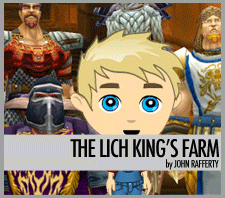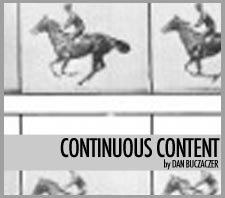Experimental Experiences – The GDC Experimental Gameplay Sessions
Posted by John Rafferty | March 12, 2012
I’m obviously not alone in my love for the Game Developers Conference‘s Experimental Gameplay Sessions. Every year it’s a standing-room-only affair, with an entry queue that wraps around the Moscone Center. A thousand attendees lining up to see the best and brightest from that year’s Experimental Gameplay Workshop (EGW) - an organization that exists to support the idea that there’s a group of developers who strive for originality, and who intentionally try to create new kinds of gameplay. You’re likely to see more amazing things in that two-hour session than you are in all the rest of your GDC calendar, which really says a lot considering the amazing, insightful talks that fill the GDC schedule every year (my personal schedule was at least triple-booked for every session timeslot this year – leaving a quick look at the entry queue, or the flip of a coin to decide which session to ultimately attend).
2012 marked the sessions’ 10th anniversary, and the quality of the entries certainly lived up to the occasion. Steve Swink, of Shadow Physics fame, showed off Scale – a first-person puzzler built around the shrinking, growing, and conservation of mass and force, creating a fresh, but simple, gameplay feeling reminiscent of your first go with Valve’s Portal. Need to reach a button above? Borrow some mass from the clouds and trees surrounding your player and “shoot” it into the mini boulder you’re standing on. Need to reach that mcguffin all the way across the map before the cage it’s in closes? Just shrink the map itself to traverse more quickly. Given the crowd’s response, I’ll venture to guess we’ll see more of this theme in near-future game releases.
The OAK-U-TRON 201X is an arcade cabinet on wheels, built specifically for the Oakland Occupy movement to play one game – Keep Me Occupied, a simple cooperative affair where one player stands on buttons to allow the other player to enter doors, and vice versa. While the cabinet and the game itself aren’t necessarily groundbreaking (Keep Me Occupied was actually built in just a couple of weeks using the game development software Game Maker), the theme fit perfectly with its launch as the cabinet was rolled through the streets of Oakland as part of the on January 28th, 2012 with the aid of hundreds of people.
Building on the cooperative theme, the guys at Simple Machine got the crowd to shout things like “Bieber”, “Obama”, and “South By Southwest” as they demoed Twirdie – the first Twitter-powered golf game. You swing the club by typing in a word and the iOS iOS title determines the power of your “shot” by checking how many times the word’s been mentioned on Twitter in the past 60 seconds. A word of advice, however, swinging with “SxSW” will probably net you 100 yards too many on just about every drive this week.

Of the ten amazing entries, the one that really got my head spinning was Glitchhiker, a game made with the express intent to “die”. Built at the 2011 Global Game Jam, the entry was conceived around the jam’s theme of extinction. And rather than explore the usual dinosaur fare, project lead Rami Ismail and his team of five decided to build an experience that would become extinct itself. A simple coin-collecting platformer of sorts, Glitchhiker was built with only 100 lives. That’s 100 lives for the entirety of the game, not for the individual player. Playing the game cost a life, and unless the player collected more than 200 coins, that play session subtracts from the game’s longevity. Score 200+ points and you were giving back to the game’s pool, hopefully extending its life so others could continue to play. As the game lost lives, the system decayed, creating graphical and audio errors that hindered the gameplay experience, making it . You’ll notice I’m talking about Glitchhiker in the past tense. That’s because at the six-hour mark, 52 players in, the game was essentially killed “by a drunk Canuck” who failed to reach the point plateau. The ultimate “game over.”

In an advertising world where brands and marketers are obsessed with evergreen campaigns, striving for some form of permanence, Ismail’s whole pursuit was to create something impactful, yet fleeting. The game would live or die based solely on users’ interactions; which is certainly a parallel to recent creative briefs. But unlike our campaigns, Glitchhiker would only live on if people played and were actually successful at doing so. Play and score less than 200 points and you’ve taken a life from the pool; lessening both the game’s chances for immortality, as well as another gamer’s opportunity to play and contribute. It was this scenario, Ismail said, that created a fervent emotional bond for many players – driving some to tears when their effort fell short.
While I’m not denying the potential benefits of an evergreen campaign, or an extended interaction with a brand, Ismail’s game does certainly remind us that just because something’s not built for longevity, does not automatically mean it’s not impactful, or even infinite.
Leave a Comment
RSS feed for comments on this post · TrackBack URI



